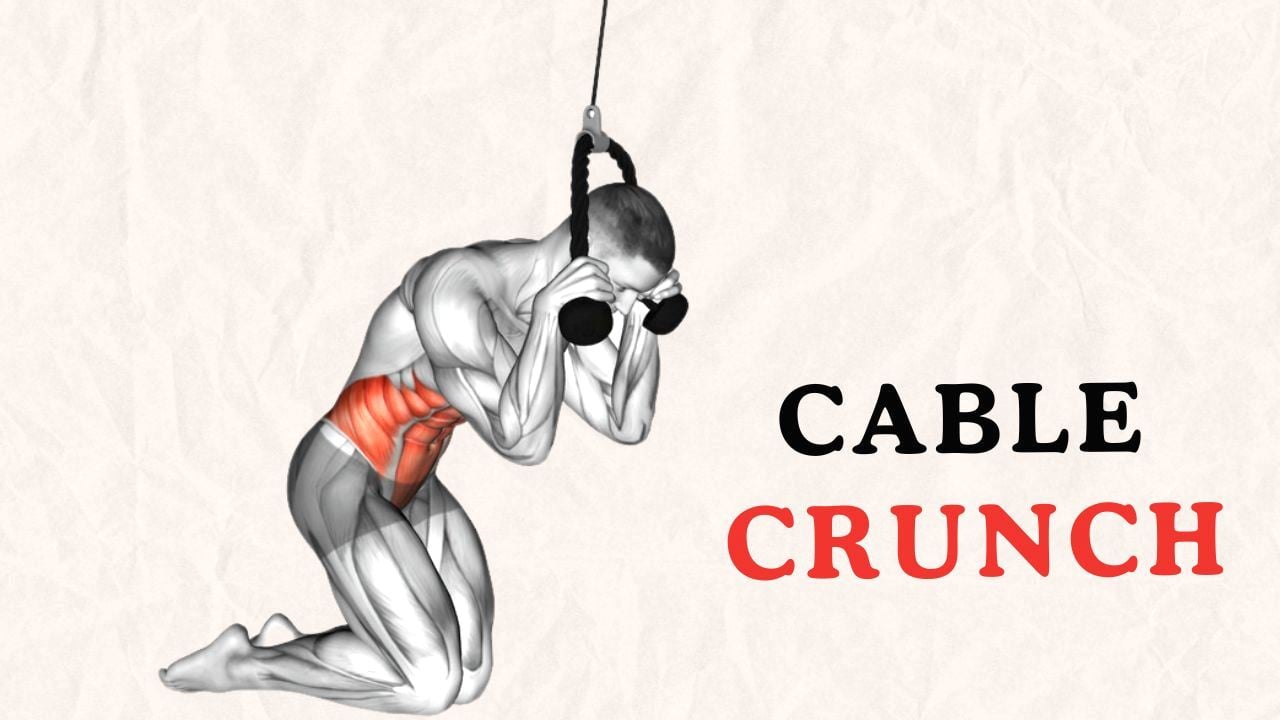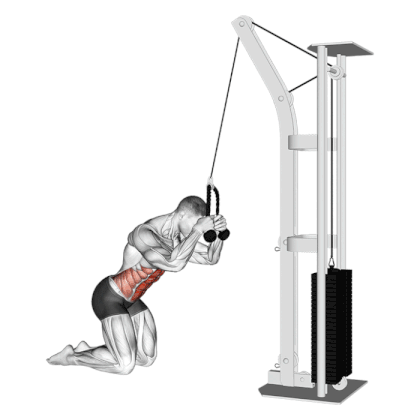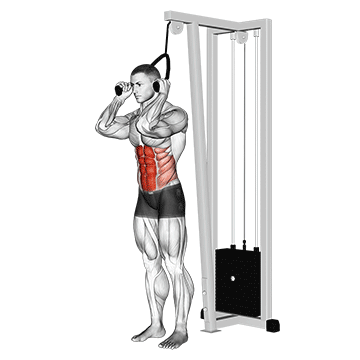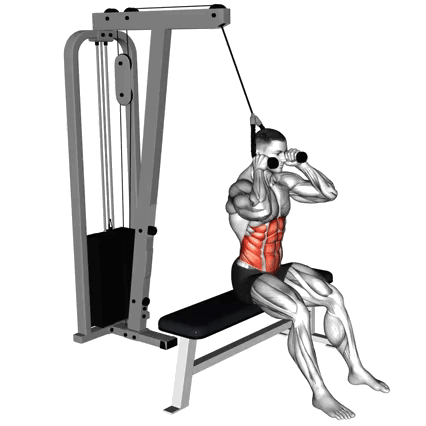The Cable Crunch is a great exercise for building core strength and defining your abs. It’s especially effective if you’re looking for a movement that can add real resistance to your ab workouts.
While doing a weighted crunch is okay, but holding a weight plate on your chest or behind your head can be uncomfortable and difficult. As you get stronger, it will be harder to add more weight without straining your neck.
One unique benefit of the Cable Crunch is its ability to engage your entire rectus abdominis, but it doesn’t stop there. Because you’re using cables, your muscles work harder during the whole range of motion.
There are several variations of the cable crunch that can add variety to your workout and target your core in different ways.
- Kneeling Cable Crunch
- Standing Cable Crunch
- Seated Cable Crunch
- Single-Arm Cable Crunch

How To Do Kneeling Cable Crunch
- Attach a rope handle to a high pulley on a cable machine. Kneel in front of the machine.
- Grab the rope with both hands and lower it to your head, letting it rest near your ears or just above your head.
- Keep your hips stationary, and curl your upper body down towards your thighs. Imagine you’re trying to touch your elbows to your knees.
- Your lower body should remain stationary, and the motion should come solely from your core.
- Slowly return to the starting position and repeat.
- Do not let the weight stack drop back to the starting position before the end of the set.
- Do 10-15 reps per set and adjust the weight to make the resistance challenging but manageable.
Tips and Form
- The hips should be kept high and locked throughout the set to avoid engaging the hip flexors and allow for a full range of motion. If the hips are positioned too low, you cannot perform a full crunch. Hip movement during the reps means using your body weight and hip flexors to perform the movement.
- Focus on curling your spine (spinal flexion) rather than just pulling with your arms or shoulders. Think of your rib cage moving toward your pelvis.
- Keep your hands at the sides of your head, close to your ears, without pulling down on the rope with your arms. Your arms should remain fixed, while the crunch motion comes from your abs.
- Avoid pulling with your head or neck—let your core do the work.
- Exhale deeply as you crunch down, which naturally engages your deep core muscles (like the transverse abdominis) and helps you achieve a stronger contraction.
- Choose a heavy weight that your lower back can handle.

Cable Crunch Variations
1. Standing Cable Crunch
If you find kneeling uncomfortable or prefer a more upright position, the standing cable crunch offers a great alternative.
Standing crunches give you a greater range of motion. You can stretch your abs more at the top of the move, which means a deeper contraction when you crunch down.
Standing cable crunch works more stabilizer muscles than traditional seated or kneeling variations. When you stand, your body has to work harder to maintain balance.

2. Seated Cable Crunch
The Seated Cable Crunch brings some unique perks you won’t get from other variations. Since you’re seated, you don’t have to worry as much about balancing yourself, so you can focus on squeezing your abs. It’s like having extra stability that lets you channel all your energy into working your core.
It’s perfect if you’re looking for a more straightforward way to isolate your abs without worrying about your lower body or posture.


Manish is a NASM-certified fitness and nutrition coach with over 10 years of experience in weight lifting and fat loss fitness coaching. He specializes in gym-based training and has a lot of knowledge about exercise, lifting technique, biomechanics, and more.
Through “Fit Life Regime,” he generously shares the insights he’s gained over a decade in the field. His goal is to equip others with the knowledge to start their own fitness journey.
